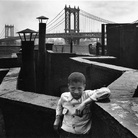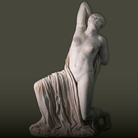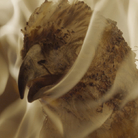La Bandiera del Mondo 1+1=3

Michelangelo Pistoletto e Angelo Savarese. La Bandiera del Mondo 1+1=3, MACRO - Museo di Arte Contemporanea, Roma
Dal 20 December 2018 al 6 January 2019
Roma
Luogo: MACRO - Museo di Arte Contemporanea
Indirizzo: via Nizza 138
Curatori: Fortunato D’Amico, Francesco Saverio Teruzzi, Velia Littera
Enti promotori:
- Roma Capitale - Assessorato alla Crescita culturale
Costo del biglietto: ingresso gratuito
Telefono per informazioni: +39 01528400
E-Mail info: fondazionepistoletto@cittadellarte.it
Il giorno 20 dicembre 2018 verrà presentata per la prima volta al Macro Asilo di Roma, alla presenza degli artisti Michelangelo Pistoletto e Angelo Savarese, l’opera d’arte “La Bandiera del Mondo 1+1=3”
Concept Artistico
In un momento storico in cui si assiste alla disgregazione dei vecchi modelli di organizzazione territoriale e di potere, cresce il senso di disagio dei cittadini davanti alle prospettive di un futuro in cui le identità nazionali sembrano dileguarsi per l’incedere della globalizzazione.
Le culture locali, continuamente contaminate da quelle di altri paesi a causa delle continue migrazioni in atto su tutto il pianeta, sono sottoposte a confronti che spesso generano conflitti e atti d’intolleranza e di violenza. Non siamo capaci di rispettare i diritti degli altri e pretendiamo di costruire un mondo migliore all’insegnadella pace.
Il simbolo del Terzo Paradiso di Michelangelo Pistoletto è un segno di equilibrio, un gesto di condivisione, uno strumento “open source” che dà a tutti la possibilità di lavorare insieme, ognuno portando il suo contributo, alla costituzione di un’opera d’arte unica e dove anche il ruolo dell’artista è messo al servizio della comunità.
Ogni bandiera del Mondo rappresenta una specificità territoriale, con una propria cultura e un’idea diun’elaborazione di società del tutto esclusiva. Attraverso l’ormai noto simbolo del Terzo Paradiso si entra in una dimensione evolutiva dove non esistono separazioni in cui il segno dell’infinito ci conduce in una realtà continua e senza confini.
Angelo Savarese realizza 196 tele che rappresentano le bandiere di altrettanti nazioni e collocate nel segno TRINAMICO di Pistoletto instaurano una comunicazione efficace per rappresentare il concetto di unità nella diversità. Ognuno degli stati del Mondo è una parte di un insieme senza il quale non sarebbe possibilel’esistenza del singolo.
Io esisto perché posso fare qualcosa per Te e Tu puoi fare qualcosa per Me. Tu ed Io insieme facciamo Noi e in questa filosofia di Pistoletto del 1 + 1 = 3, Angelo Savarese propone una terza dimensione, un luogod’integrazione dove i conflitti tra il globale e il locale trovano un punto di equilibrio nel Terzo Paradiso.
La forma d’arte creata da La Bandiera del Mondo, evidenzia il concetto che è necessario “amare le differenze” per consentire ai popoli di completare l’opera di umanizzazione con un’azione responsabile concertata e conseguita insieme agli altri. È con questi intenti che Cittadellarte Fondazione Pistoletto promuove valori e pratiche di partecipazione democratica, come i 17 Obiettivi di Sostenibilità promulgatidall’Agenda 2030 delle Nazioni Unite.
Descrizione dell’Opera
Composizione del simbolo del Terzo Paradiso di Michelangelo Pistoletto realizzato con un telaio di legno di mt. 18 x 8 che accoglierà 196 tele dipinte da Angelo Savarese in tecnica mista di cm. 40x40 cadauna.
La prima installazione della Bandiera del Mondo prevede anche la partecipazione di un gruppo di studenti delle classi terza media dell’Istituto Daniele Manin di Roma, che saranno protagonisti insieme agli artisti nel comporre la prima rappresentazione del simbolo al Macro Asilo creando così una forma d’arteassolutamente pura, non controllata e spontanea.
Angelo Savarese. L’arte nella vita di Angelo Savarese è da sempre passione e cerca di emergere sin dalla sua giovane età; già fanciullo, dipinge ispirandosi ai grandi artisti. Nasce a Napoli nel 1967 e dopo qualche anno si trasferisce a Roma, ma sembra avere ereditato dalla sua città natale le curiosità delle cose del mondo, quindi la genetica del suo passato lo proietta nel suo futuro romano. A Roma cresce, si forma, inizia il suo percorso artistico ed è qui che vive e lavora. Attento osservatore e uomo dai grandi valori, ha trovato il modo di esprimersi con una tecnica artistica tutta sua. Uomo dalle poche parole, sembrerebbe, in realtà le parole confluiscono nella sua mente in modo armonioso e sono quelle che lui riversa sulla tela diventando queste il fondo stesso, dove poi dialoga con colori posti irregolarmente, astrattamente e abilmente. Le opere di Savarese appaiono quindi un mix di precisione e disordine, laddove la precisione delle lettere scritte con una calligrafia a rilievo definita con tecnica ed elementi vari, creano un secondo strato sulla tela e diventano il messaggio inequivocabile dell’opera stessa, mentre l’informalità si riflette con la combinazione dei colori postio“buttati”sullatelainmodoinformaleematericocometoccofinale. Ilrisultato...un’artecheracconta.Dasempre Savarese vuole raccontare, vuole fermare l’attimo, vuole onorare le parole sue come di altri, vuole far parte del mondo, vuole dialogare con il suo “io” curioso. Il futuro dell’artista lo vede impegnato in progetti d’arte piuttosto che creare la singola opera. Sempre attento a temi di stampo sociale egli usa la sua arte con un nuovo indirizzo, creare dei progetti a tema che raggruppano varie opere similari nell’ambito del progetto stesso, ognuna con un suo messaggio e valore. Flags è un progetto che l’artista porta avanti da vari anni con l’obiettivo di realizzare tutte le bandiere del mondo in stile“Savarese”, quindi la voglia di unirlo attraverso l’arte, intesa come veicolo di pace. Mannequin, un altro recente progetto legato a temi quali la solitudine, la repressione, la tristezza, la sofferenza dell’uomo contemporaneo porta Savarese a dialogare con dei manichini ai quali egli dona un imprinting di parole, materia e colori, nel tentativo di umanizzarli: un chiaro grido di aiuto per salvare le nuove generazioni dai pericoli di questo mondo così falsamente globalizzato, tecnologico e “Wi-Fi”!
SCARICA IL COMUNICATO IN PDF
COMMENTI

-
 Dal 2 December 2025 al 19 February 2026
Milano | Centro Culturale di Milano
Dal 2 December 2025 al 19 February 2026
Milano | Centro Culturale di Milano
Walter Rosenblum. Il mondo e la tenerezza
-
 Dal 30 November 2025 al 12 April 2026
Gallarate | Museo MA*GA
Dal 30 November 2025 al 12 April 2026
Gallarate | Museo MA*GA
Kandinsky e l’Italia
-
 Dal 29 November 2025 al 12 April 2026
Roma | Musei Capitolini
Dal 29 November 2025 al 12 April 2026
Roma | Musei Capitolini
La Grecia a Roma
-
 Dal 22 November 2025 al 3 May 2026
Torino | Sale Chiablese dei Musei Reali
Dal 22 November 2025 al 3 May 2026
Torino | Sale Chiablese dei Musei Reali
Orazio Gentileschi. Un pittore in viaggio
-
 Dal 20 November 2025 al 25 January 2026
Firenze | Palazzo Strozzi
Dal 20 November 2025 al 25 January 2026
Firenze | Palazzo Strozzi
Andro Eradze. Bones of Tomorrow
-
 Dal 21 November 2025 al 28 March 2026
Cuneo | Complesso Monumentale di San Francesco
Dal 21 November 2025 al 28 March 2026
Cuneo | Complesso Monumentale di San Francesco
La Galleria Borghese. Da Raffaello a Bernini. Storia di una collezione


